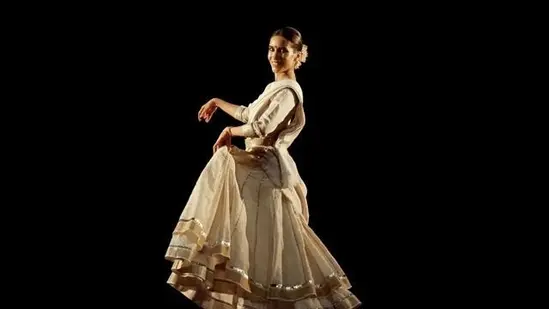How Kathak is shaping Indian cinema
There is something eternal about Kathak, from the swirl of a lehenga to the accuracy of footwork and the subtlety of expression. Having danced since the age of three, I find myself fascinated by the power of this art form every single day. It fills me with deep pride, and sometimes concern, as Kathak strengthens its presence in Indian cinema. For decades, it has not only enriched the visual palette of films but also added layers of narrative depth and cultural resonance.
Kathak’s entrance into cinema was as effortless as a river finding its course. Early Hindi directors, inspired by mythological, devotional, and historical narratives, instinctively harnessed its emotive power. The 1932 film Indra Sabha, adapted from the 1853 Urdu musical dance-drama commissioned by Nawab Wajid Ali Shah, brought Kathak’s rhythmic storytelling vividly to the screen. Since then, Indian cinema has never been the same.
Yet neither cinema nor Kathak has remained static. Over decades, costuming and context have at times obscured Kathak’s authenticity. As my guru Shovana Narayan once observed, Gopi Krishna’s choreography in Amrapali (1966) was beautiful, but the costumes created for the characters veered away from historical accuracy. In contrast, Roshan Kumari’s Chaturang sequence in Jalsaghar (1958) remains a benchmark with a pure embodiment of traditional Kathak complete with tora, tukra, paran, and gat bhava. Similarly, Gopi Krishna and Choubey Maharaj’s Benaras gharana performances in Jhanak Jhanak Payal Baaje (1956) dazzled with technical brilliance and expressive power.
In later decades, Indian cinema embraced global influences like disco, belly dance, pop, giving us item songs powerful enough to make films blockbusters. Mujra sequences have also resurfaced, notably in Netflix’s recent web series Heeramandi. Although the OTT series featured talented performers, it missed a Kathak dancer’s rigorous riyaaz, storytelling, and poetic depth.
Still, I believe cinema can return to Kathak’s roots and capture its boundless magic. The legendary Pandit Birju Maharaj, showed this beautifully through his unforgettable choreography in Devdas (2002), revealing how classical dance can enrich cinema. In my own career, I have choreographed thematic works from feminist reinterpretations like Devaki to ecological homages to the Yamuna, demonstrating Kathak’s enduring relevance as a contemporary storytelling medium.
This enduring relevance owes much to Kathak’s very nature as a dialogue with tradition, woven through story, poetry, music, and emotion. In every project, whether on stage, screen, or commercial, I strive to preserve its soul and integrity. When honoured, the classical dance offers cinema more than beauty; it provides substance. Through its expressive vocabulary, Kathak can summon the divine, confront human dilemmas, and shed light on contemporary issues. It gives dignity to period dramas, lends grace to romances, and infuses energy into modern narratives.
As audiences shift from cinema halls to streaming screens, we stand at a crossroads where tradition, technology, and storytelling meet. This is our moment to celebrate Kathak’s enduring dialogue with cinema, and to protect its authenticity while daring to explore new creative frontiers. When we honour its discipline and open it to evolving narratives, this art form transforms into a living, breathing force that shapes the future. From temple floors to film sets, Kathak’s rhythms echo across time, calling each generation to witness, feel, and be moved by its ageless spirit.
